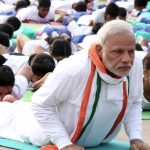Dopalli Topi
The Heads In Nawabi Era
The timeless beauty of chikan and its elegance traces its origin to Lucknow. The Chikan work in Lucknow is older than 200 years and later it was patronized by Nawabs. Since then it has evolved and attained its glory and perfection in Lucknow. Admired the world over today, the art has trickled into every section of fashion world and every part of India. Chikan embroidery is a very impressive work on muslin cloth done by only white thread. This has been there from the Mughal periods. It was Nur Jahan, who introduced it for the very first time in India. This embroidery especially has more value than others do due to its traditional look as well as ancient age. However, yet it still manages to remain trendy in fashion world. This work can be easily seen on sarees, salwar suits, sherwanis, kurtas as well as kurtis easily. Girls and women are biggest lovers of this work. Even men prefer to have sherwani with modest but beautiful work of chikan embroidery on it. However, this work has spread its area. Now it can even be seen on topis of men.
Headwears of a particular place are often a projection of people and their ideology. The same is true the erstwhile Awadh or Lucknow. The Nawabi culture was significantly represented through various headwears in the 19th century. Headwears or topis were often associated with the aristocracy or people from the higher strata of the society. The type of headwears changed its course over the period of time; many new were invented and improved. It also often symbolized religious statements.
Topi is a headgear worn by Muslim men for religious purposes. It is an integral part of their traditional and religious attire. The topi should particularly be white if it is accompanied by a keffiyah scarf, else there are no specifications and boundations associated with the colour of a topi. The sporting of topis can be traced back to ancient times. These were deemed the most apt accessory to cover the head. They are easily available in the market. It comes in handy and finds various utilities in the desert. Though in India, the topi is mostly worn during prayers or Namaz and during daily salat. It is said that wearing a topi brings God’s love. These topis are a perfect garment to adorn your top during a Nikah, i.e., wedding, as it gives out a religious and traditional look.

During Nawab a four-cornered headgear was invented. To make it look fashionable the Nasir-ud-din Haider’s time the topi in use had five corners. It is believed that it was associated with the Shia culture. The five corners of the cap symbolized five members of the prophet’s family. It was strictly meant for the king. The five-cornered cap became popular in Lucknow and was often styled with chikankari. However before the five-cornered cap the four-cornered cap was in use called as chau goshia cap. General public, in meetings, gatherings, special occasions etc, wore it. The fashion of headgears also changed when a prince from Delhi came to Lucknow with his dopalli cap, which attracted masses. It was made out two pieces of cloth and was a light form of headwear. Improvements were made to dopalli cap and a new style emerged of nukka topi, which was pointed in the front and back. It was decorated with gorgeous silver and golden threads and also with chikan embroidery. During Nawab Saadat Ali Khan a new style of fashion emerged. Along with discontinuation of the style of drooping moustaches he adopted a new style of headwear more like a pagri, which was referred to as Shimla by locals. Wajid Ali Shah, the last nawab came up with the new idea of cardboard base cap called as alam pasand, which was to be worn by people who were awarded with titles. It is visible how the idea of fashion was of prominent in Lucknow in past. It is an undeniable fact that people of Lucknow are still fond of accessories and have a sense of fashion. Lucknow still remains a centre of traditional fashion.
Akansha
Writer is a student, an aspiring painter & calligrapher
(Published in The Lucknow Observer, Volume 2 Issue 16, Dated 05 July 2015)




